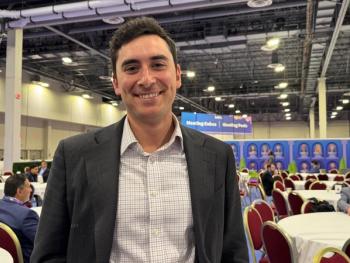
Gender-affirming surgeries have risen 'dramatically': Study
Researchers point to the need to ensure the appropriate care for transgender patients, even as the procedures have been restricted in some states.
Gender-affirming surgeries nearly tripled in the years before the COVID-19 pandemic, according to a new study published in Jama Network Open.
The number of gender-affirming surgeries rose from 4,552 in 2016 to 13,011 in 2019. The number of procedures dipped to 12,818 in 2020, the first year of the COVID-19 pandemic. The
Researchers noted the relatively modest decline in gender-affirming surgeries in 2020, even though they are largely elective procedures.
“These findings suggest that the number of (gender-affirming surgical) procedures performed in the US has increased dramatically,” the authors wrote.
The rise in gender-affirming surgeries has important implications for healthcare, even as those procedures have come under fire and been severely restricted in some states, the researchers said.
“There will be a greater need for clinicians knowledgeable in the care of transgender individuals and with the requisite expertise to perform GAS procedures,” the authors wrote.
Researchers at Columbia University and the University of Southern California conducted the study. They found that breast and chest surgery were the most commonly performed procedures, although genital reconstruction was more common among older patients.
More than half (52%) of those who underwent gender-affirming surgeries were 19 to 30 years old, and another 22% were 31 to 40 years old.
Researchers noted that gender-affirming surgeries in those 18 and younger are “relatively uncommon.” The study found 7.7%, or 3,678 procedures, were performed on patients 12 to 18 years old. In that age group, 3,215 patients (87%) underwent chest or breast surgeries. Researchers found 405 procedures for those 12 to 18 years of age involved genital surgeries.
Gender-affirming care for teens and children has been the subject of intense debate and criticism, as some states have passed laws to restrict procedures and treatment for minors. Legal challenges have been filed to ensure access for such procedures, and medical societies have strongly defended the value of gender-affirming care.
The
In the new study, researchers said there were 4,359 gender-affirming surgeries in those 41 to 50 years of age (about 9% of all procedures), while those over the age of 50 were less likely to undergo those surgeries.
Most patients (88%) underwent the procedures at urban, teaching hospitals, and more than 70% of the patients were in the west or northeast (46% in the west and 26% in the northeast).
Researchers noted differences in the types of gender-affirming surgeries in different age groups. Patients 19 to 30 years old were most likely to undergo breast and chest procedures. Genital surgery was the most common procedure for patients over the age of 40.
“These trends likely reflect the increased complexity of genital surgery compared with breast and chest surgery as well as the definitive nature of removal of the reproductive organs,” the authors wrote.
The mean age for vaginoplasty (the construction of a vagina) was 40 years, while the mean age for orchiectomy (the removal of testicles) was 37. The mean age for a hysterectomy was 31, while the mean age for mastectomy was 28 years.
Most patients (60.5%) had private insurance coverage, while 25% were Medicaid recipients. The researchers acknowledged that while they tallied procedures in large, nationwide data sets, it's possible that they may have underrepresented the actual number of gender-affirming surgeries in the U.S.
Given the political environment, “delivering equitable gender-affirming care in this complex landscape will remain a public health challenge,” the authors wrote.








































